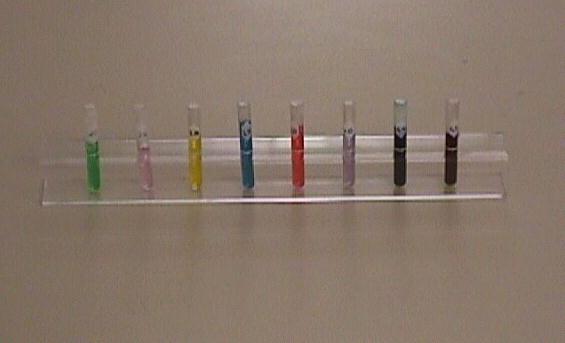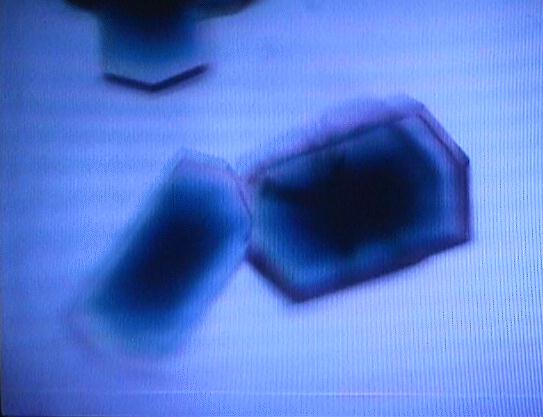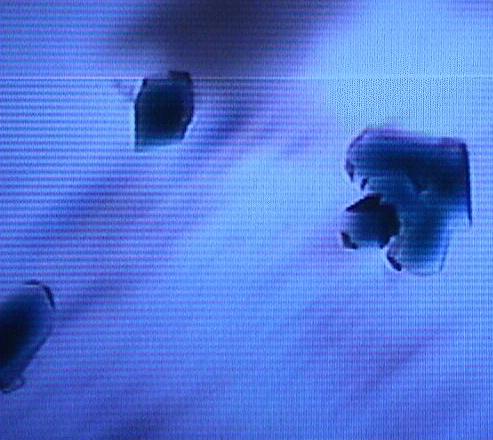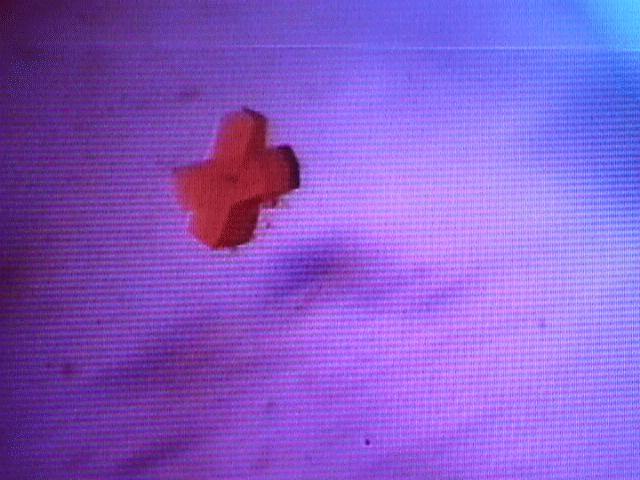 |
% salt/colors from left to right
2.0 % salt - pale green
|
 |
% salt/colors from left to right
2.0 % salt - pale green
|
| 2.0 % salt (pale green color) -
no crystals |
|
| 2.5 % salt (pink color) -
no crystals |
|
| 3.0 % salt (yellow color) -
no crystals |
|
| 3.5 % salt (blue color)-
nice orthorhombic or tetragonal crystal shape - crystal size about .1 mm * see comment below right |
  |
| 4.0 % salt (rose color) -
nice orthorhombic or tetragonal crystal shape - crystal size about .05 mm * see comment below right |
  |
| 4.5 % salt (light purple color) -
small crystals formed but no good photographs were available |
*Salt concentration has little to do
with the morphology of the crystal. If the crystals are grown above
25 degrees C (77 degress F), the predominant form is orthorhombic (longer
aspect ratio). Below 20 degrees C (68 degrees F), the predominant
form is tetragonal (shorter aspect ratio). In between, the form is
usually teragonal which sometimes interconverts to orthorombic. The
only way to tell for sure is to do an xray diffraction.
(Anna Holmes; Univ of Alabama at Huntsville) |
| 5.0 % salt (dark blue green color) - many small crystals with undetermined crystal shape |
 |
| 5.5% salt (wine color) -
many small crystalline to amorphous particles |
 |